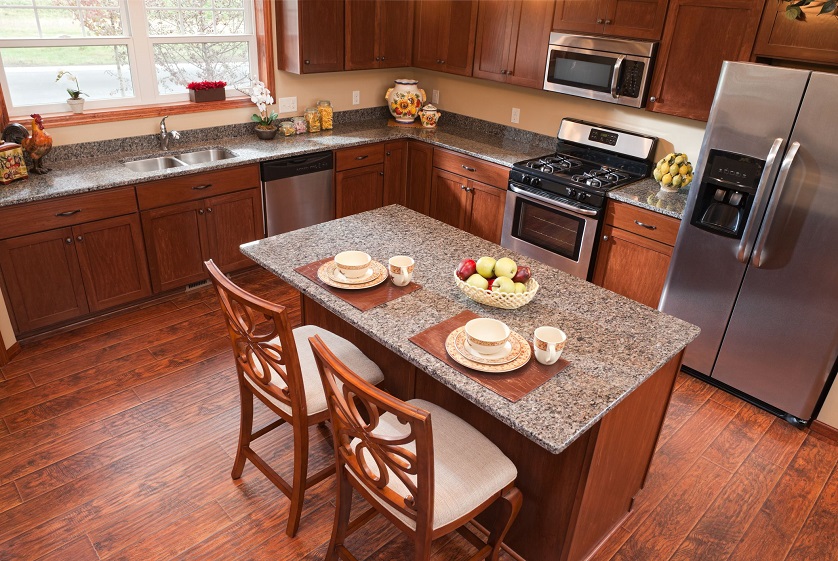Choosing laminate floor for your kitchen is not only aesthetically pleasing, but in fact it’s also very practical. Some of the features of laminate flooring include stains, impact and scratches resistance. Installing laminate flooring in kitchen is easy and you can even DIY. For this purpose, you just need to snap the planks together, no glue, no nails – easy. The funny truth is, it’s harder to choose a laminate floor than it is to install it.

Contents
Laminate Duplexity
There are two types of laminate flooring: engineered wood and plastic wood. Some of the differences include what they are made of, their resilience and their value.
Engineered wood
Created from layers of real wood glued together, this is considered to be luxury laminate, costing twice as much as plastic laminate but being more prone to getting damaged. Luckily, it can be fixed up to three times, a feature that the plastic laminate lacks. It can also add to the value of your house.
Plastic wood
Made completely artificiality with a back layer of melamine, a fiberboard core in the middle and a printed wood pattern on top, plastic wood laminate is cheap and easily replaceable. What gives it the extra protection is the layer of clear hard plastic on top. This is the recommended choice when placing laminate flooring in kitchen as it can withstand moisture and pet-claws.
Underlayment
In order to make your laminate feel comfortable and silent, you need to add foam underlayment. Apart from that, it also makes it easier to install the laminate itself. It is useful to also buy tape as it will be needed to connect two separate pieces of underlayment.
Always Finish with (life)style
Choose a laminate finish that would suit your way of life, if you live in a house with children or pets it is best to choose a low-gloss finish or hand-scraped patina, as it will look much cleaner and better for an extended period of time as opposed to glossy, grain patterns.
Choose Plank Size Depending on Floor
If you have uneven sub-floors, choose smaller sized laminate planks, otherwise the wider planks will be separated from the uneven floor and leave gaps between them. Or you can level your sub-floors better before applying the laminate flooring.
Laminate flooring in kitchen is really useful as it is really easy to clean and maintain. You simply swipe over it once a day and that’s it.











